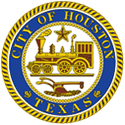 > Fire Department > Firefighter Health and Safety Initiative
> Fire Department > Firefighter Health and Safety Initiative
Houston Fire Department
Firefighter Health and Safety Initiative

Upon arrival at HFD, two and a-half years ago, Chief Peña made a priority to address long-overdue cancer prevention. Firefighters have 9% higher rate of cancer diagnoses than the general public. Vehicle exhaust fumes and other residues on protective gear; a lifetime of environmental exposure to carcinogens in a compressed time period or chronic exposure throughout a firefighting career. Through planning, budgeting and oversight, this year, the Department saw the following results:
Compliance Officer – A first for the Houston Fire Department
Assignment of a Personal Protection Compliance Officer to monitor and inspect personnel to ensure that the 3500 firefighters in 94 fire stations are gear-cleaning and inspection requirements, adhering to National Fire Protection Association regulations.
Protective Hood
Funding secured for a second protective hood to allow firefighters to have a clean hood while contaminated equipment is laundered and cleaned. Hood distribution complete by end of the week.
Respiratory Protection
Self-contained Breathing Apparatus (SCBA) with particulate filter respirators were issued to Arson Investigators for use during investigations and other environments were particulate exposure is possible.
Gear Bags
Issued to firefighters to protect and encapsulate protective equipment during transport to limit exposure from soiled gear.
Gross Decontamination Kits
Post-fire decontamination kits have been issued to all Engine companies. These kits provide tools and equipment to wash off contaminants and residue from firefighters’ personal protective gear.
Decontamination Wipes
For use immediately after a fire-related incident to remove soot and other contaminants from the surface of skin, limiting absorption, inhalation or ingestion of dangerous particulates.
Arson Division Personal Protective Equipment
Upgraded safety helmets, fire boots, coveralls and Tyvek suits were issued to Arson Investigators to reduce exposure to soot and other carcinogens.
Life Safety Bureau
Safety equipment including mask with respirator kit and Tyvek suits were issued to the Department’s plan-checking team for use when particulate/asbestos exposure is possible.
Atmospheric Gas Monitors
Purchased and issued to Arson Investigators and certain Life Safety Bureau personnel and Emergency Operations District Chiefs to detect hazards and assess atmospheric conditions.
